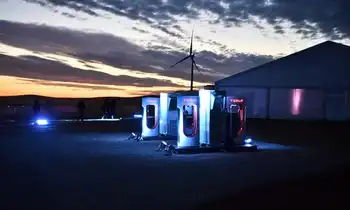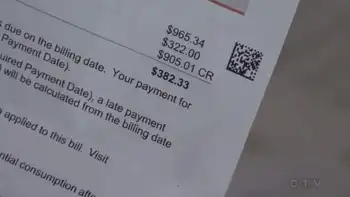Tampa Electric promotes energy planner program
By Business Wire
Protective Relay Training - Basic
Our customized live online or in‑person group training can be delivered to your staff at your location.

- Live Online
- 12 hours Instructor-led
- Group Training Available
The company will advertise the program through newspapers, TV and online as a way for customers to save up to 10 percent annually on home energy costs. Energy Planner makes electricity available for customers at a lower cost than Tampa ElectricÂ’s standard rate.
Tampa Electric is one of only two electric utilities in the Southeast to offer an Energy Planner-type program. Energy Planner enables customers to program how appliances will operate based on how they choose to balance comfort and energy savings. The program targets a homeÂ’s biggest energy users: central heating and cooling systems, electric water heaters and pool pumps. Tampa Electric installs the thermostat at no cost to customers, who pay nothing to participate in the program.
With Energy Planner, residential customers living in single-family homes receive multi-tiered electricity rates based on the time of day and season. Customers then can choose to alter their energy consumption based on the price tiers. While equipment compatibility limitations do not currently allow mobile homes and attached dwellings (such as apartments, townhomes, duplexes and condominiums) to use Energy Planner, the company is exploring solutions to allow for wider availability.
In addition to Energy Planner, the company helps customers save energy through free online, telephone and in-home Energy Audits and an array of other energy-saving programs. As of the end of September, the company had performed nearly 2,000 more Energy Audits this year compared to the same time last year.
“We’re excited to take part in Energy Awareness Month, especially at a time when our promotions are resonating with a growing number of customers interested in saving energy – as evidenced by the record number of free Energy Audits we’ve performed this year,” said Kevin Webber, director of sales and marketing. “Energy Planner is another way we’re helping our customers manage their energy use.”
Earlier this year, Tampa Electric filed with the Florida Public Service Commission (FPSC) the company’s proposed energy-efficiency goal of 200 million kilowatt-hours (kWh) for the next 10 years – an increase of 70 percent more than the company’s current goal. To achieve this aggressive goal, Tampa Electric plans to enhance several of its current 27 customer programs and explore opportunities for new programs for all customer sectors: residential, commercial and industrial.
The FPSC will rule on Tampa ElectricÂ’s proposed energy-efficiency goal in the coming months. With approval, the company would implement new programs in early 2010. Through this recent filing, Tampa Electric expects to continue its leadership in energy efficiency. Since the launch of its energy-efficiency programs in 1979, prior to any state or federal requirements, more than 400,000 customers have participated in Tampa Electric conservation programs, which have helped defer the need to generate electricity sufficient to serve 630,000 homes for one year.











